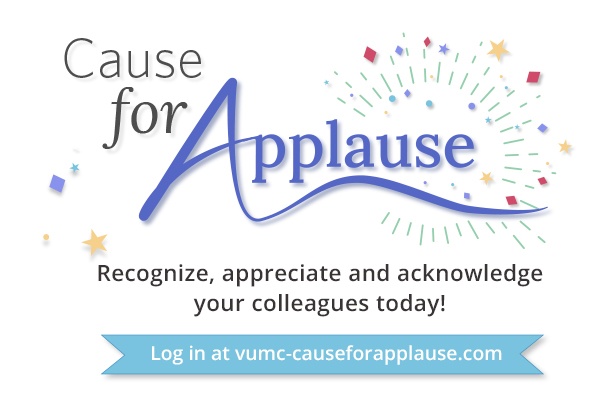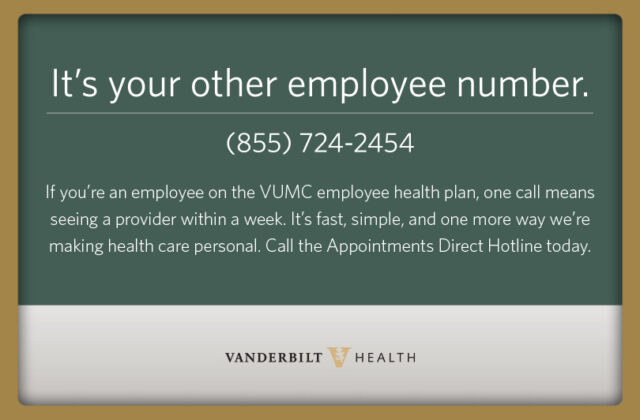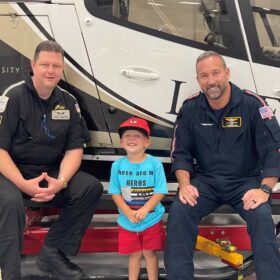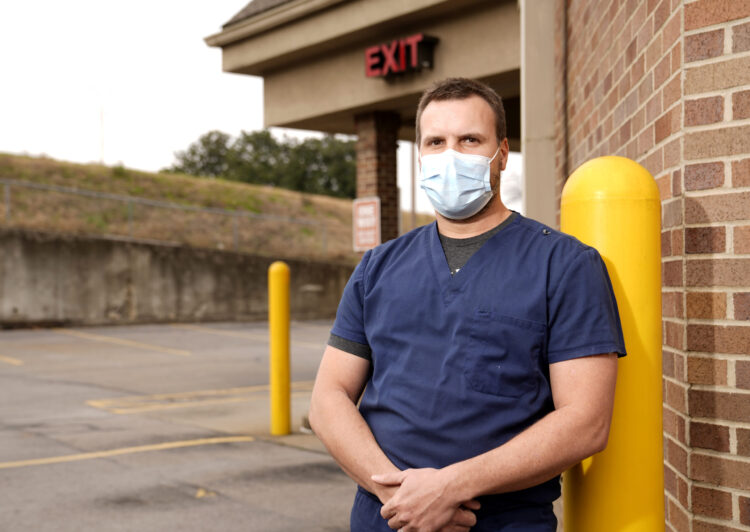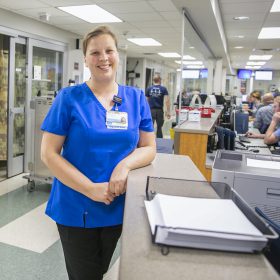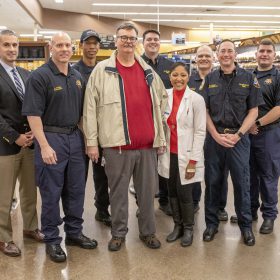Midwives saving lives
The mother of the groom was choking at a wedding reception. A person needed CPR on a plane. Two Vanderbilt midwives stepped up.
June 18, 2021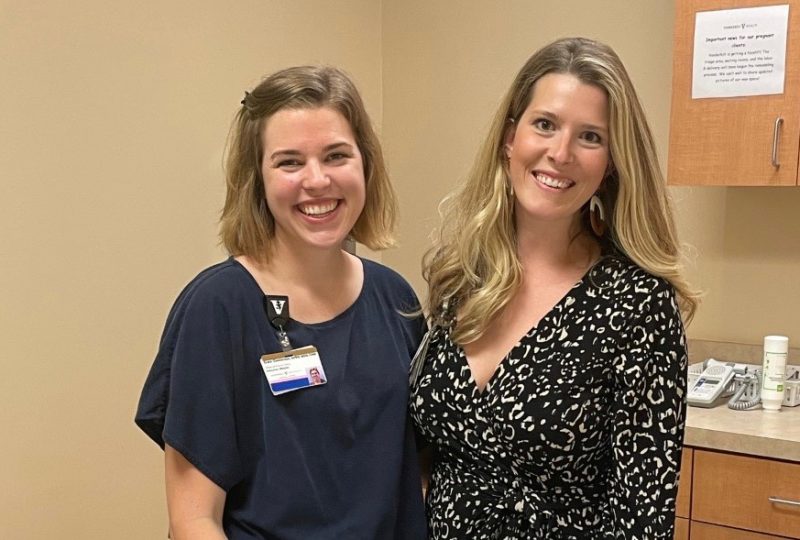
Grace Zimmerman, left, and Alexandra Speros are Vanderbilt midwives who are more accustomed to helping babies into the world than keeping adults from leaving it — but each provided lifesaving help in two emergencies a few days apart. Photo by Emily Stembridge
Nurses are no strangers to protecting and advocating for patients and their health on a daily basis. But recently, two Vanderbilt University Medical Center Certified Nurse Midwives (CNMs) found themselves using their life-saving skills outside of their normal hospital setting — one at a wedding and one on an airplane.
On May 22, Alexandra Speros, CNM, FNP, APRN, was attending a wedding in her hometown, Washington, North Carolina. During the reception, she heard commotion and screams, along with the word “Heimlich.” She followed the noise to find two men attempting the Heimlich maneuver, also known as abdominal thrusts, on the mother of the groom, who was choking.
Speros stepped in to attempt the Heimlich as well, hoping that she could get the right angle to stop the choking. “I did four abdominal thrusts, and it did not work,” Speros said. “Then, she went limp in my arms.”
Speros was able to pinch and pull out a large piece of steak that was obstructing the mother of the groom’s airway.
Speros announced that she needed to start CPR, asking if anyone else at the wedding was certified and could help. Luckily, two other attendees — an internal medicine resident and a nursing instructor — were able to step in and provide Speros with the support that was needed to save the woman’s life. Speros ensured emergency services had been called and began chest compressions.
“I did one round of chest compressions, and she seemed like she was back, but I couldn’t fully tell what was going on,” Speros said. “When I was told she had a neurodegenerative disorder, I realized she needed help getting the dislodged item from her mouth. I asked if I could put my fingers in her mouth, and she nodded yes, so I carefully went in to avoid pushing anything back in.”
Speros was able to pinch and pull out a large piece of steak that was obstructing the mother of the groom’s airway. After that, Speros and her impromptu team of health care professionals made sure the woman was able to rest and recover.
“When it was clear that she was OK, we sat her up and everything was fine,” Speros said. “It’s been nice to be able to tell my colleagues that all of the CPR training we go to every two years really works. Somehow, I knew what to do, and the people around me knew what to do, and that’s what it boils down to.”
Forty-eight hours later, Grace Zimmerman, CNM, APRN, was on the first leg of a flight from California to Nashville — stopping in Houston for a layover. About an hour into the flight, flight attendants asked if anyone on board was a medical professional. Zimmerman raised her hand and was rushed to the back of the plane, where a woman who was suffering from an apparent heart attack had collapsed and was unconscious, in her seat.
Zimmerman took the woman’s pulse and felt nothing. Realizing the severity of the situation, she asked the flight attendants to initiate an emergency landing.
“It happened very quickly, and I knew action needed to be taken,” Zimmerman said. “There wasn’t much time to question what I should do.”
Zimmerman took the woman’s pulse and felt nothing. Realizing the severity of the situation, she asked the flight attendants to initiate an emergency landing. With the help of a recently graduated EMT, Zimmerman utilized a defibrillator and administered chest compressions and breaths to the woman, who briefly regained consciousness and a pulse, but passed out again shortly after.
“We did four rounds of chest compressions and breaths while we were landing,” Zimmerman said. “She would regain a heartbeat, and then we would lose her again. Luckily, by the time she landed, she had a heartbeat and was semiconscious.”
The plane made a successful emergency landing in El Paso, Texas, where paramedics met the woman at the gate and rushed her to the nearest hospital. Zimmerman is not sure where the heart attack victim is now, but knowing the woman was alive when they landed brings her hope.
Speros says midwifery prepared both herself and Zimmerman to act quickly in high-stress situations. “For us, birth is a routine thing, but you always have to be prepared for emergencies,” Speros said. “Very often, we need to delegate and ask for what we need, so we’re both accustomed to that kind of pressure.” The two midwives are part of Vanderbilt Midwives, the Vanderbilt School of Nursing faculty practice operated in partnership with VUMC. Speros and Zimmerman provide midwifery care at VUMC and the Vanderbilt Birth Center.
Both Speros and Zimmerman are grateful for the other quick-thinking people around them during these scenarios, which seem straight out of a movie. In both instances, various other health care professionals stepped up to help save a life — and for them, it was just what they do.




